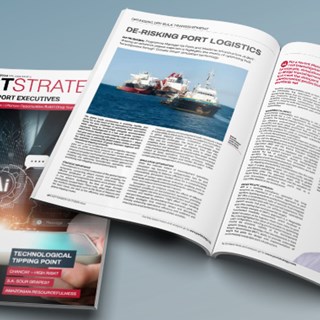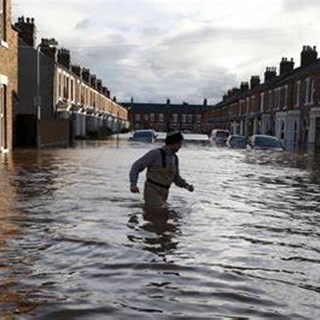
Are your offshore assets hurricane ready?
What does it mean for an offshore asset to be "Hurricane Ready"? What should asset managers consider when inspecting monitoring systems ahead of a hurricane season?
11 March 2021
Over recent years the number of tropical storms and their intensity has steadily increased, posing fundamental challenges to companies whose assets sit in their path. The devastation unleashed by hurricanes can severely disrupt operations and be costly in both lost revenues and repairing the damage. Organizations are implementing strategies to become more resilient to the growing threat of hurricanes.
There is increasing evidence that organizations that plan for disruption can respond quickly and adapt to events and are ultimately more successful and profitable. Companies operating offshore in the Gulf of Mexico, who face the annual risk of hurricane season, need to implement the plans, procedures, and technology to prepare their offshore assets for the disruption caused by tropical storms.
Jeffrey Lewis, Technical Advisor at BMT, has been helping organizations with offshore assets improve their resilience to hurricanes for almost 20 years. He said,
“Operators of assets will have a Hurricane Plan to follow when a tropical storm is nearing their offshore platform, this will involve scaling back operations and evacuating all personnel to safety. However, being ‘Hurricane Ready’, begins months before the start of the season. It involves readying and preparing critical systems used by remote engineers and asset managers to monitor the ‘health’ and structural integrity of the offshore assets during a hurricane. With all personnel evacuated, it is important to have a monitoring system that is working, and this requires regular maintenance. Otherwise, with no eyes on the platform, operators are effectively ‘blind’ and you really don't know what's happening as the storm passes overhead. Having a remote view of what's happening with the platform is critical to being able to respond to events quickly and resume operations safely.”
Hurricane season begins at the start of June and lasts through to November. Offshore operators have a window of opportunity ahead of the season to proactively prepare their asset monitoring systems by updating their systems or conducting maintenance. Routine maintenance involves calibrating sensors to ensure they make accurate measurements and provide the system is in a good state of repair. This validation of sensor data involves analyzing historic data readings and visual inspection of the sensors.
Gerardo Uribe, Service Manager at BMT, has visited and inspected asset monitoring systems on offshore assets for over a decade. “There are several key things to consider when inspecting monitoring systems to ensure they are ready for hurricane season”, said Gerardo. He continues, “Some of our systems have a built-in power supply and communication systems. Because of the planned evacuation or the hurricane, power to the monitoring system can be disrupted. So, as part of the maintenance, we ensure that all the power systems are working correctly and continue to operate and communicate with shoreside operations throughout the storm.”
“We also look at the data and see that the sensors are making readings and they are giving a reasonable answer, but once we go offshore, we can do physical inspections of the sensors’ locations. I have had wind sensors producing data that looked reasonable, however, when we went offshore, we discovered that the sensors were being shielded from the wind by the addition of new modules to the platform. Those types of things are very difficult to identify when we are only looking at the data, so being on the platform with independent sensors to verify the wind speeds and directions is important. This also applies to communication systems, antennas, or satellite receivers of the remote monitoring system. Equipment and devices installed after the initial installation of the monitoring system can interfere with the transmission system, downgrade the quality of measurements and can also interfere with GPS.”
Gerardo concludes, “A poorly maintained system, or one that fails to deliver information when needed, can often give false confidence by its presence, but delivers little when needed in the critical moment.”
Ensuring offshore assets are hurricane-ready involves a resilience strategy and plans and procedures. However, without a well-maintained monitoring system that gives you the sight of your investment, an offshore operator won’t be able to respond effectively to disruptive events.

N/A
The DCN spoke to our climate change risk, resilience and adaptation expert about preparing for the impacts of a changing climate.

N/A
With the UK and beyond facing unprecedented consequences from rising water levels and climate amelioration, BMT are helping our clients in their need for flood alleviation, prediction, mapping and mitigation. James While talks about 5 ways we can assist our clients.

Ian McRobbie
In a Port Strategy feature, Ian McRobbie highlights the merits of optimising bulk transshipment through ‘Climate-Smart’ simulation technology, drawing on extensive project experience

Noel Tomlinson - Maritime Design
Noel Tomlinson shares with SBI valuable insights on how BMT's innovative solution can help vessel operators overcome challenges and ensure a sustainable future for offshore wind operations.